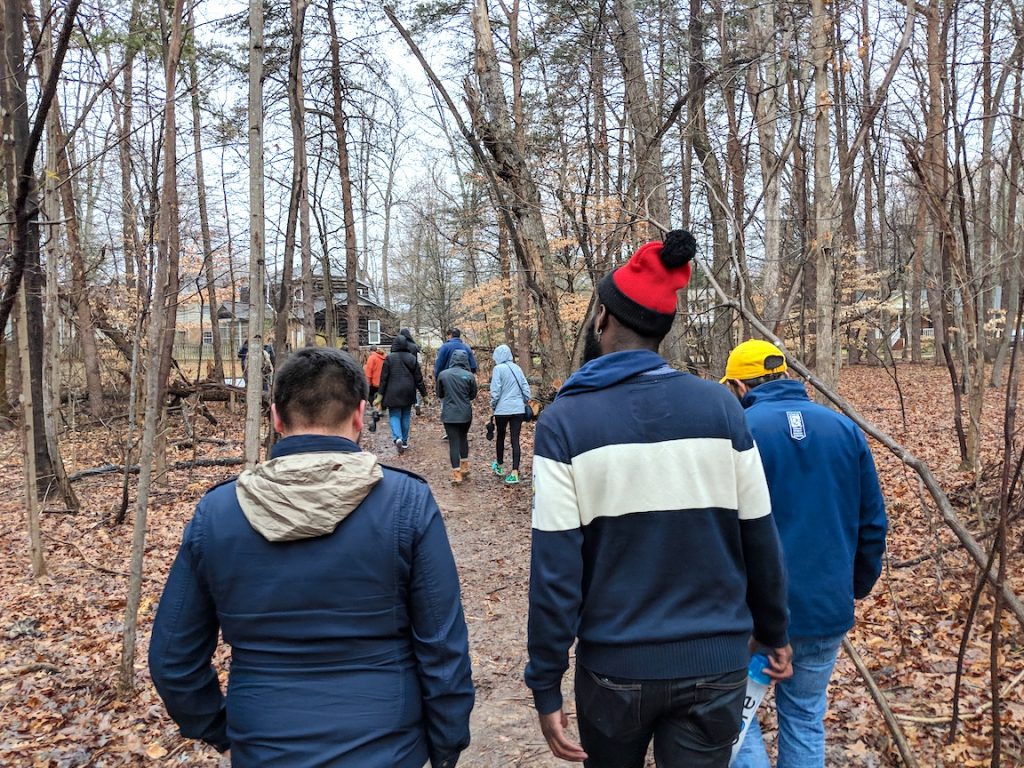Students, faculty, staff and students made several trips to the Guilford Woods to visit the Underground Railroad Tree, as well as trips to the Greensboro History Museum to learn about the local history of the Underground Railroad. Trips to the tree began here at this historical marker, with introductions by each participant and some warm-up exercises. Participants were encouraged to walk quietly in the woods and pay close attention to their surroundings, the sounds of their steps, the weather, and to note changes in the trees or landscape. Dr. Omar Ali and Dr. Nadja Cech welcome everyone on the walk to the tree and give a brief history and context to their journey.
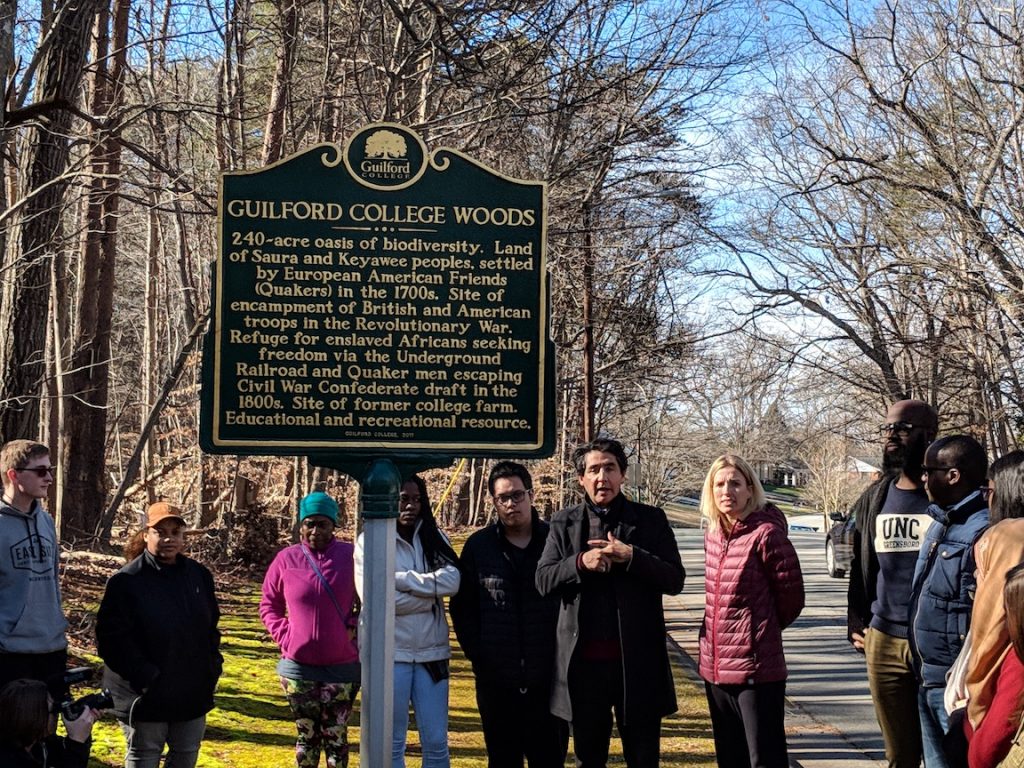
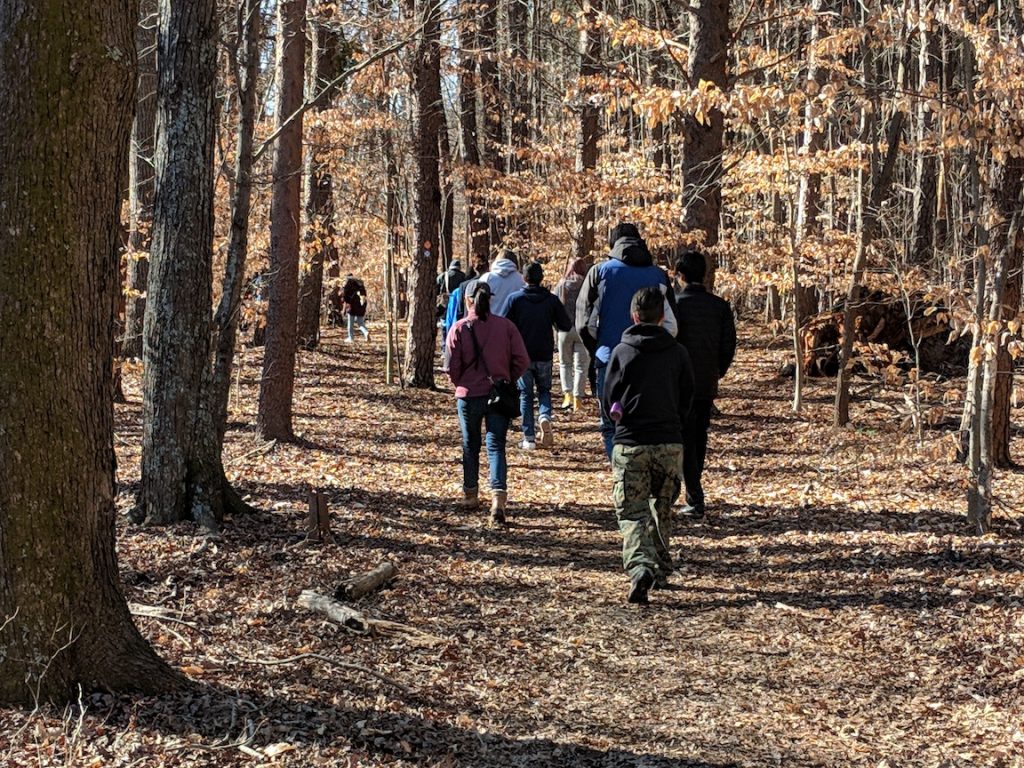
Dr. Ali makes a few stops along the way to read from significant texts related to the history of the slaves and the forest, which help make connections in the text to the surrounding landscape, trees, and weather which allows the visitor to relate to the text in a visceral way. Dr. Omar Ali reads and excerpt from Reminiscences of Levi Coffin.
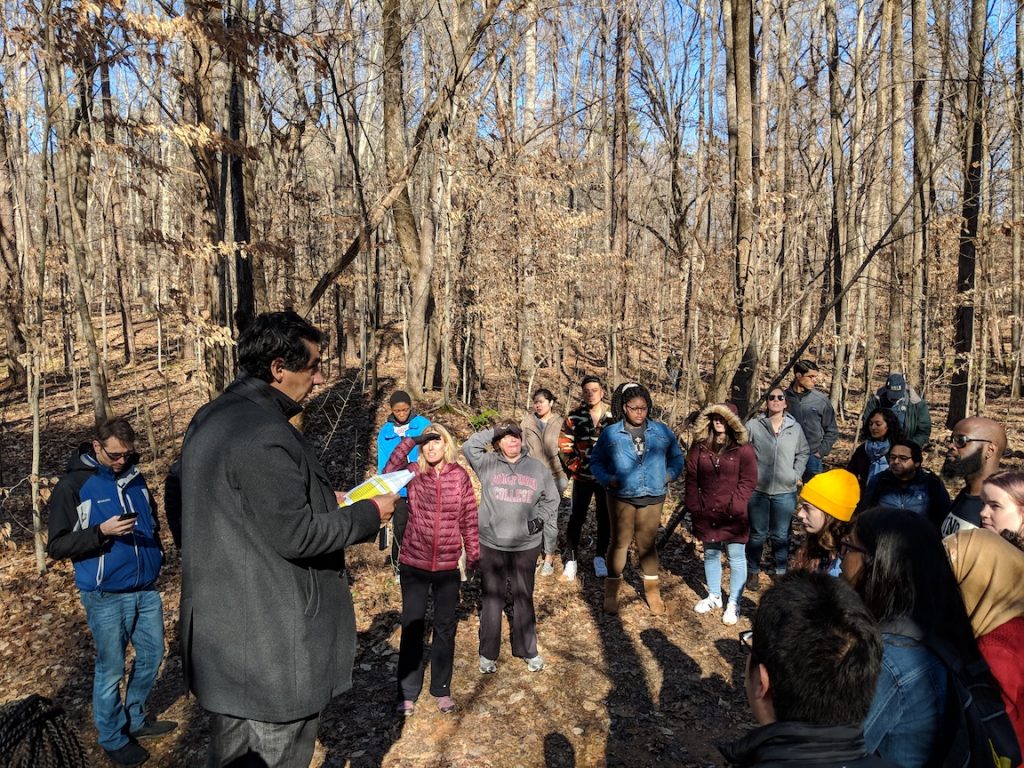
Dr. Ali demonstrates the way those trying to help the slaves find their way north in the woods under the cover of darkness would drive nails into the sides of tree or fence post as direction markers. If a slave encountered a turn or fork in a path, the could hug one of the nail trees in the dark and slide upward until the found the nail, which was usually driven in around the same height off the ground. The direction in which the nail pointed outward was the direction in which they should move. The nails could be changed to point away from any known areas of particular danger.
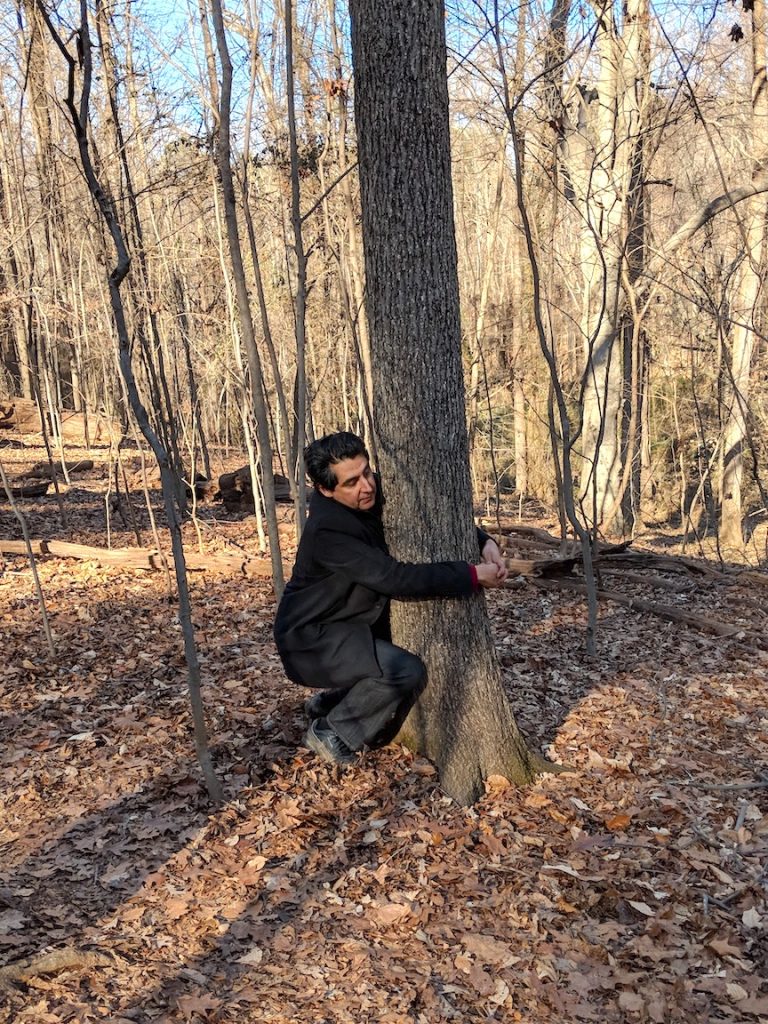
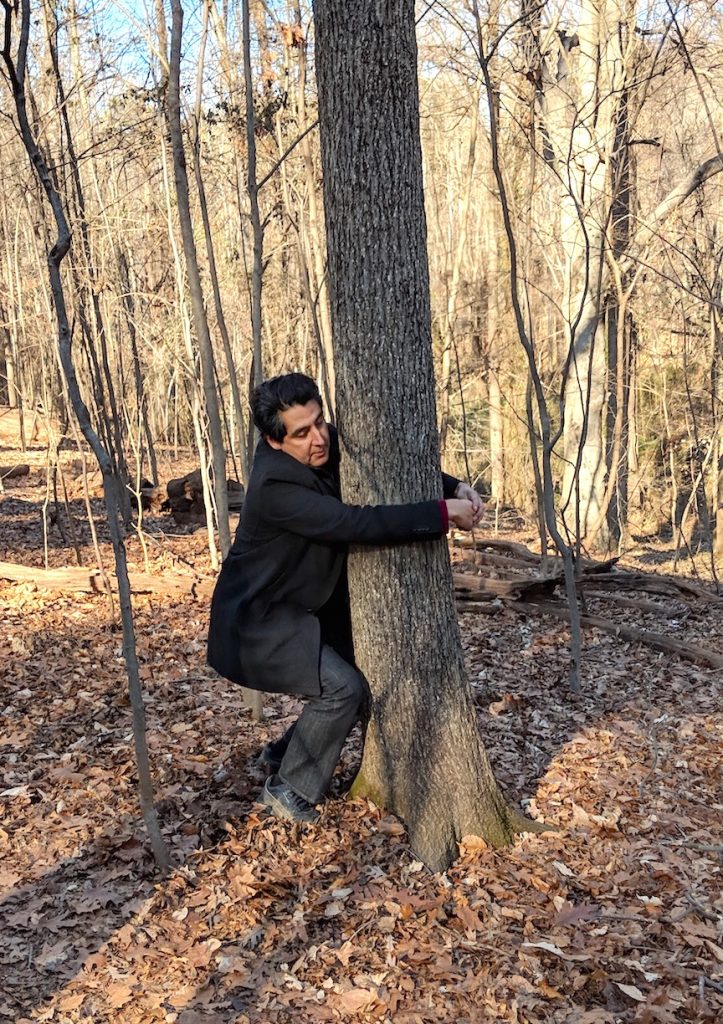
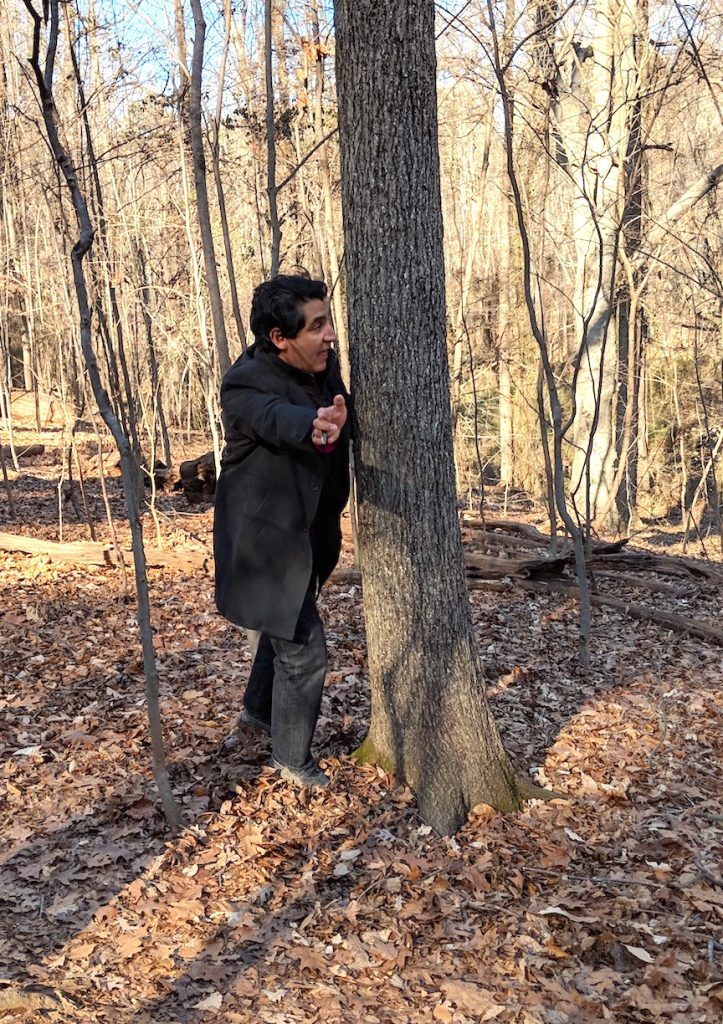
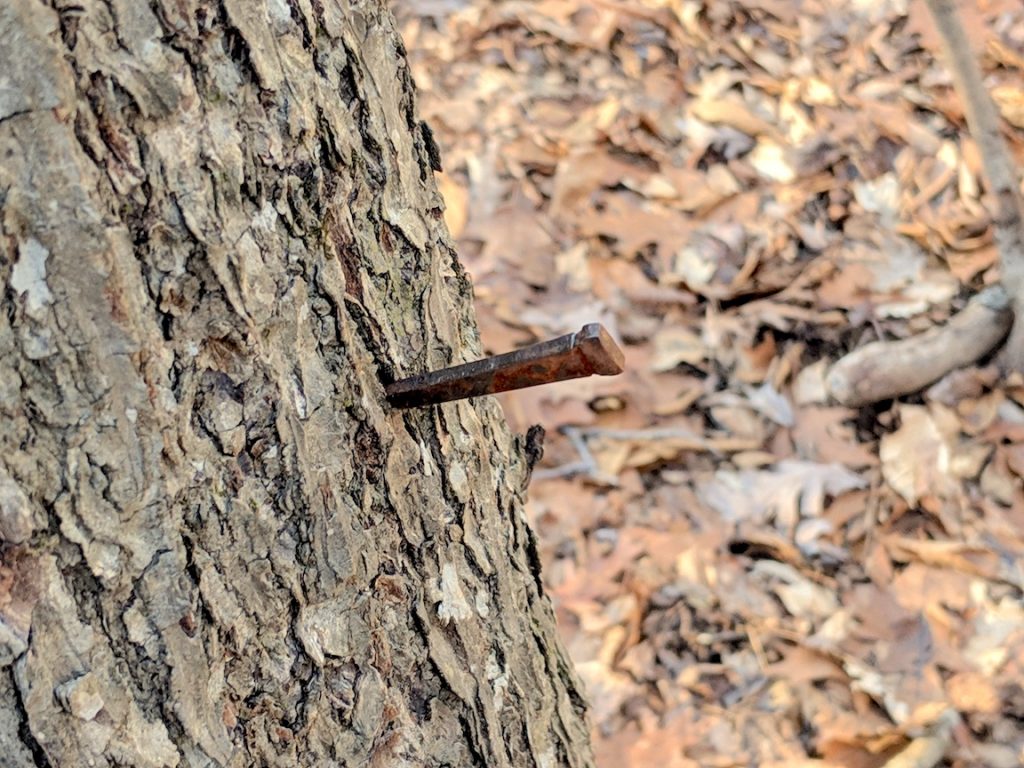
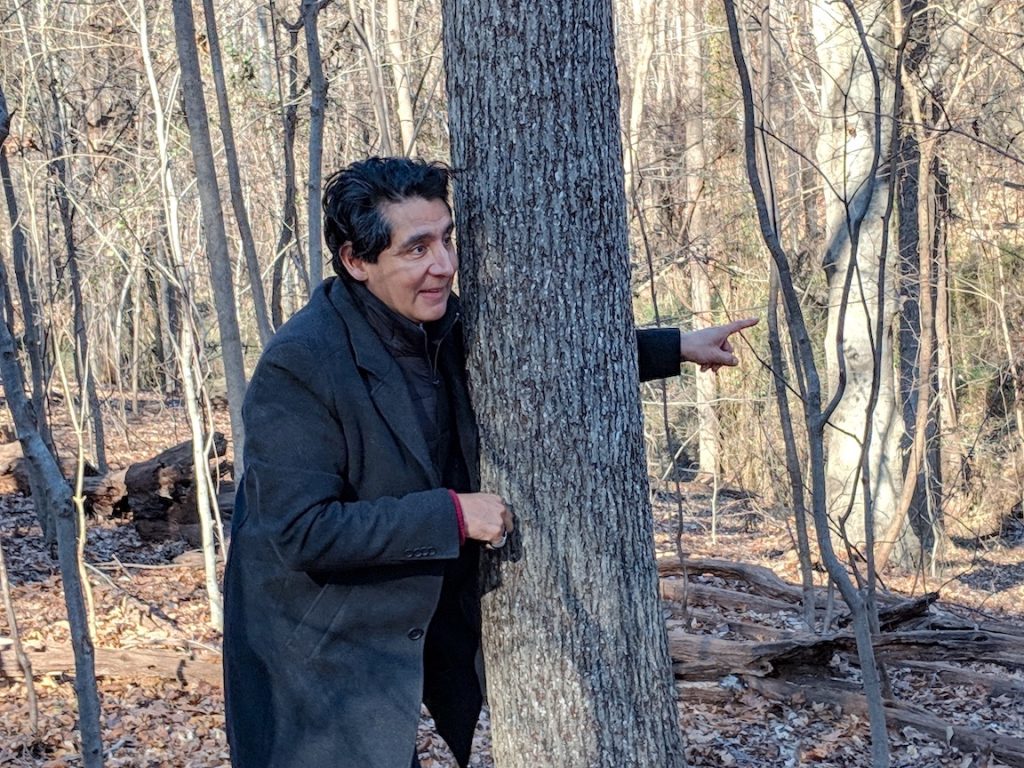
Dr. Nadja Cech reads an excerpt from the book Lab Girl which discusses the way in which you can ‘read’ trees by carefully examining their shape, scars, inner rings, and bark.
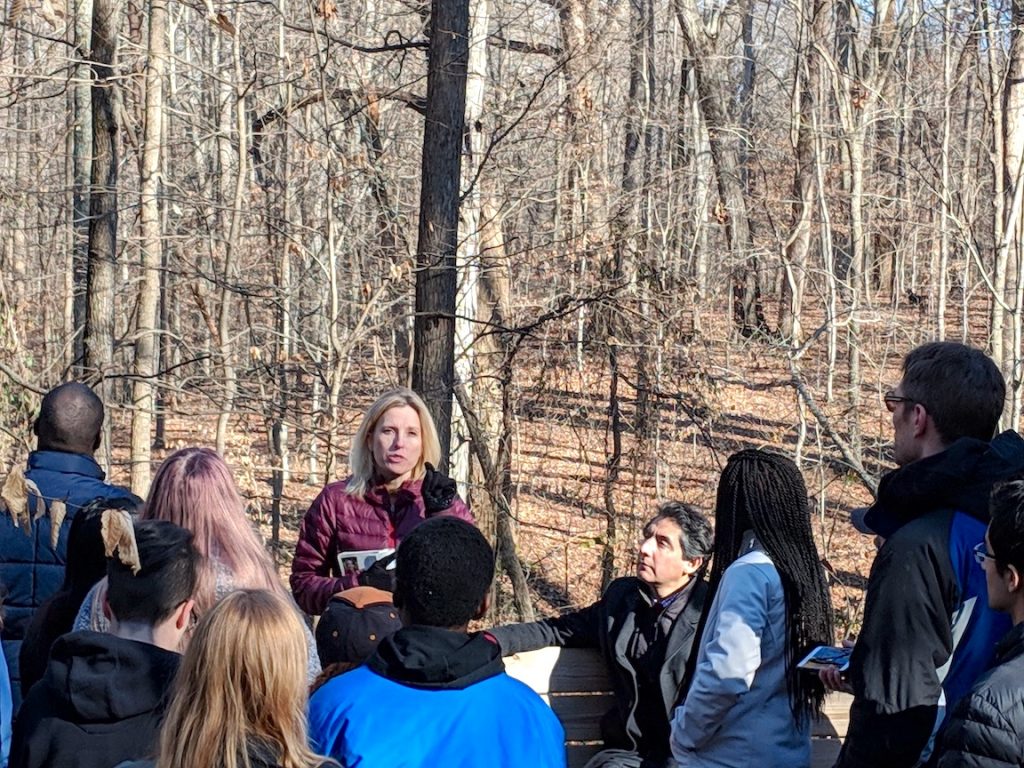
Graduate students and research scientists from Dr. Cech’s research group inspect the Underground Railroad Tree up close. They took bark samples that had fallen to the ground so that they could grow fungi cultures from them back in the lab on campus. The goal is to see if the fungi could produce compounds that might be useful in the fight against cancer and disease. Chemistry & Biochemistry PhD student Derick Jones examines bark of the Underground Railroad Tree as research scientist Dr. Huzefa Raja takes in the view of the crown from the ground.
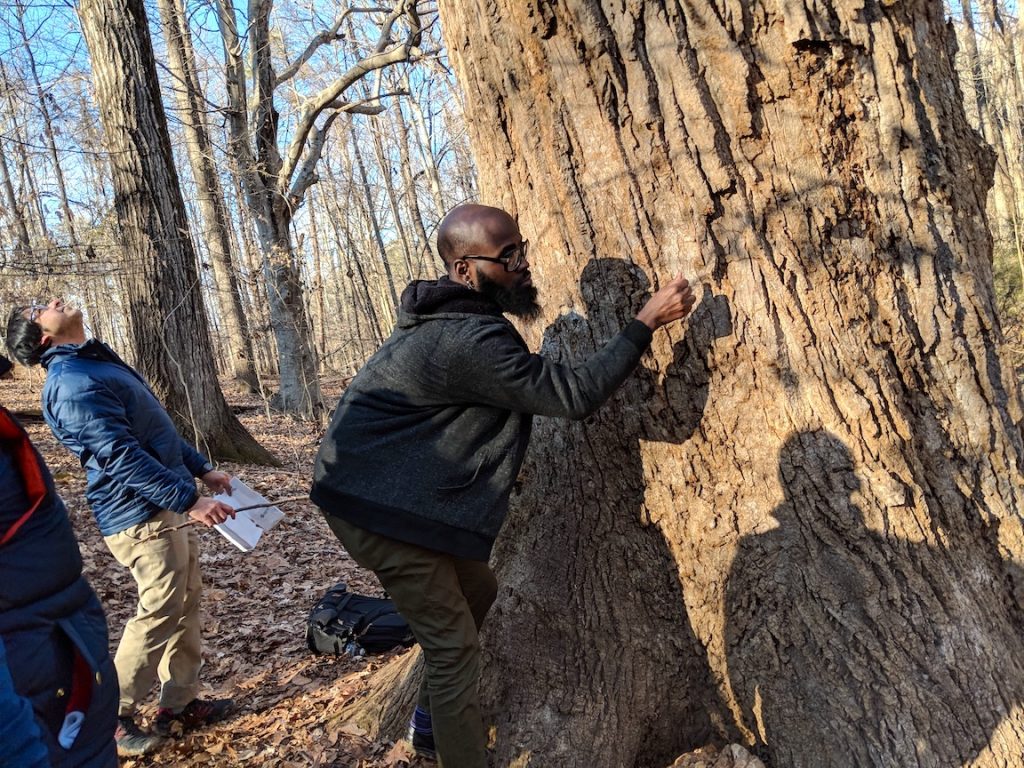
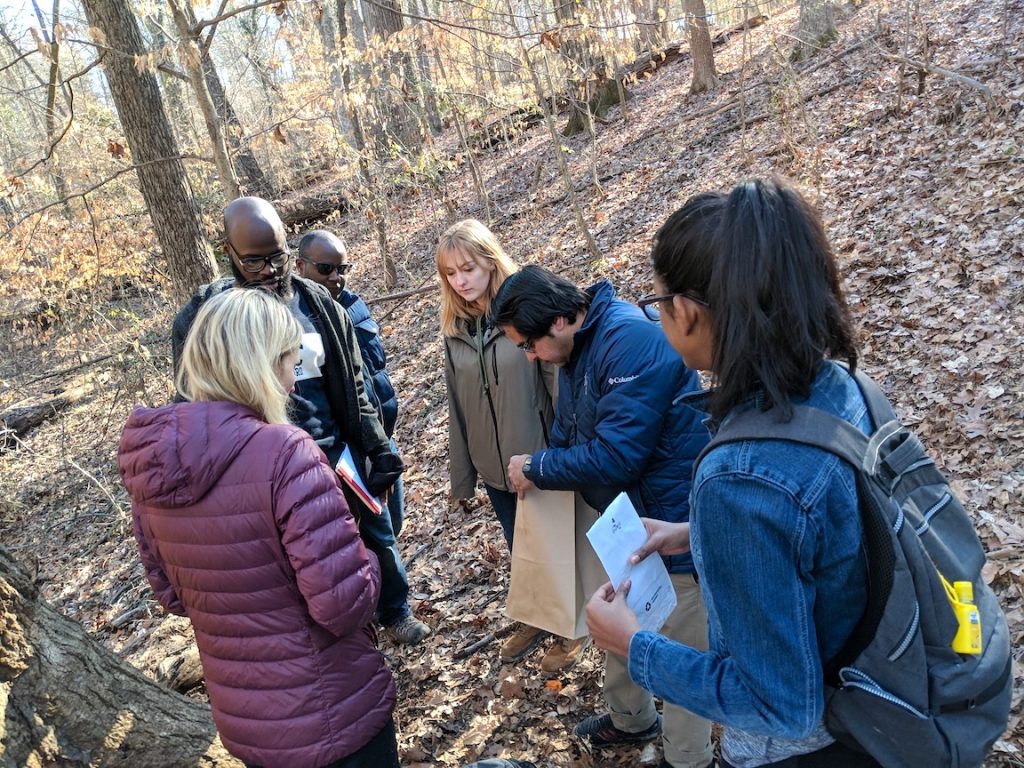
Along the journey to the Underground Railroad Tree through the Guilford Woods, Dr. Ali stops to ask participants if they notice any changes in the tree canopy and the kind of trees they see and are walking through.
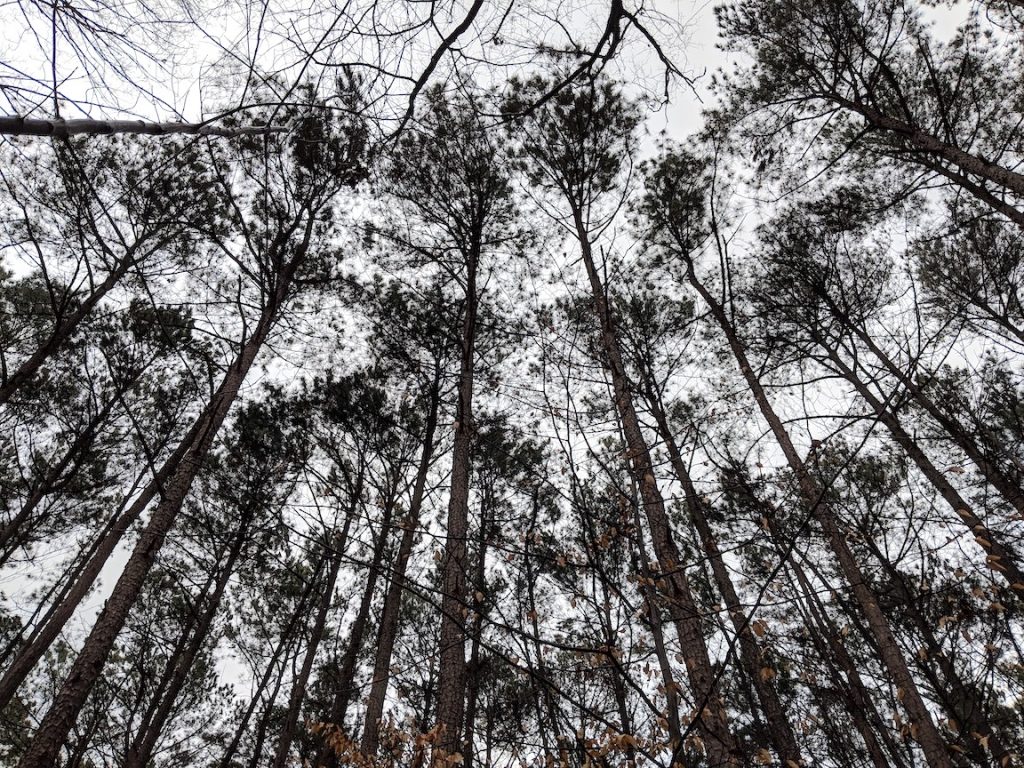
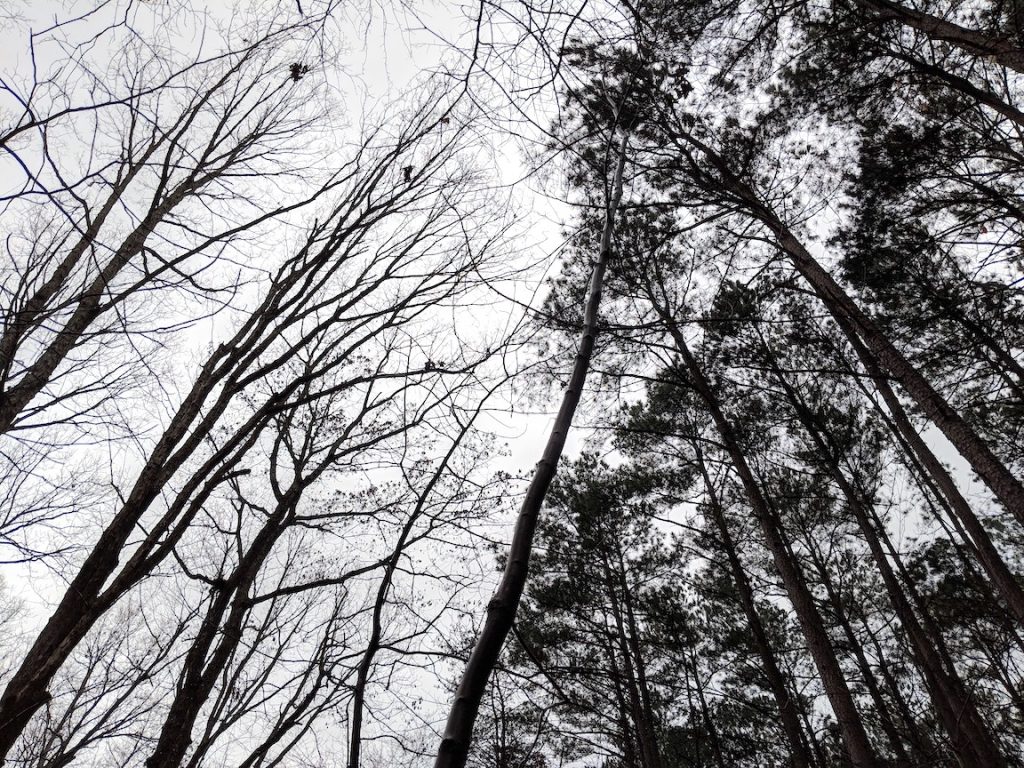
Multiple trips to the tree allowed students to experience the woods in different kinds of weather and lighting.
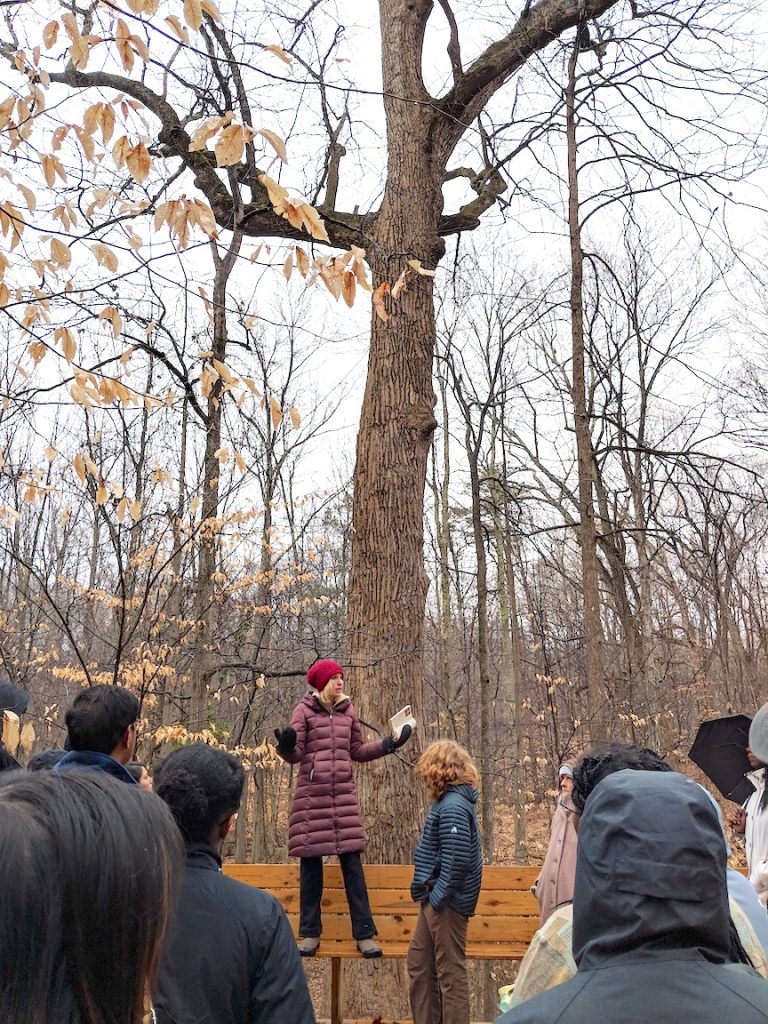
One of the wonderful benefits of including graduate students on the project and on the field trips is the opportunity undergraduate students have to talk to grad students about what they do, how they do science, and what it means to be a researcher. Here PhD student Derick Jones talks to an undergraduate on the way back out of the forest about why he became a PhD student and what it is like to be a researcher at UNC Greensboro.
